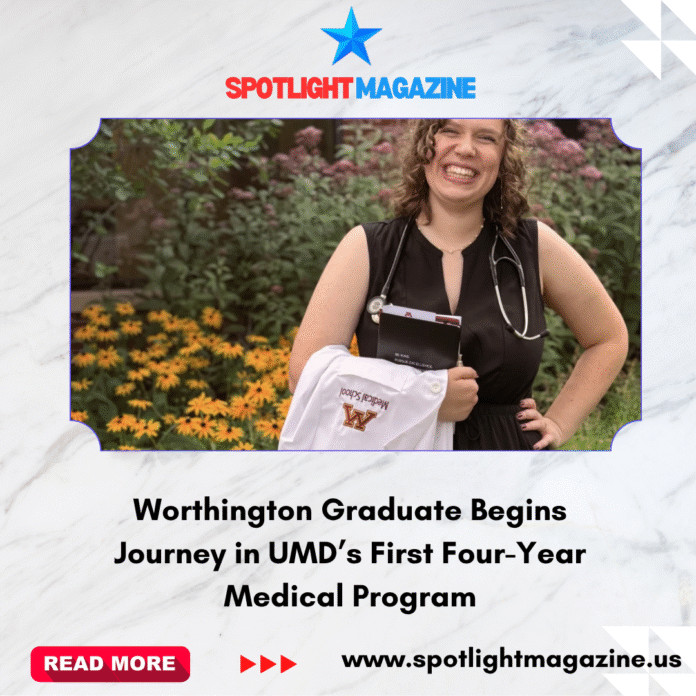Katie Conlay, a 2020 graduate of Worthington High School, has started her journey as part of the inaugural 2029 medical class at the University of Minnesota Duluth (UMD). The program recently transitioned from a two-year course to a full four-year medical program, allowing students to complete all their training in Duluth rather than transferring to the Twin Cities for clinical work.
Conlay, who earned a biology degree with a minor in history from UMD in 2024, said she was thrilled to return to the school she loves. “It’s very exciting that it’s a four-year program now,” she said. “I don’t have to transfer down to the cities halfway through. I like it up here, and I like the people up here, and that’s why I’m in medicine.”
Getting into medical school is no easy task, and Conlay knows how fortunate she is to have been accepted on her first application cycle. She took a gap year before starting medical school, working in the emergency room at Essentia Health in Duluth while completing the demanding application process. “The MCAT is a really long, hard test,” she said. “I feel very blessed that I got in my first time.”
While she has not yet decided on a medical specialty, Conlay is keeping her options open until she experiences her rotations. She hopes to remain in Minnesota after completing her training but acknowledges that residency could take her out of state depending on availability. “Where I go to residency and where I end up practicing will depend on which specialty I pick,” she explained. “But I don’t really want to move out of state. I love Minnesota.”
The first month of medical school has already been both exciting and challenging for Conlay. “It’s very fun. It’s very difficult, extremely difficult, but that’s expected,” she said. “Everyone in my class that got here got here for a reason, and we’re all able to do it.”
Her schedule is demanding, often running 12 to 13 hours a day with lectures, group discussions, and hours of study. Most of her in-person classes take place on Tuesdays through Thursdays, combined with online lectures shared across the Duluth, Twin Cities, and Saint Cloud campuses. The curriculum blends heavy science content with hands-on training.
In her first weeks, Conlay has already practiced essential skills such as measuring blood pressure, using a stethoscope, and listening to patients’ heart and lung sounds. She and her classmates also work with standardized patients—trained actors who simulate medical conditions and provide feedback on communication and bedside manner. “It helps us not just focus on the science but also get good at making people feel comfortable,” she said.
The workload is intense. Conlay recently prepared for an exam by reviewing 700 flashcards, studying at least five hours a day for a week. While the effort can be overwhelming, she is supported by her husband, Soren, who reminds her to take breaks, eat, and care for herself. “My problem-solving skills have gotten sillier because my brain is so focused on biochemistry,” she joked. “But thankfully, I have my husband to lean on.”
Despite the long hours and sacrifices, Conlay is motivated by the bigger picture. “It’s important,” she said. “It’s saving people, so it’s not going to be easy.”


